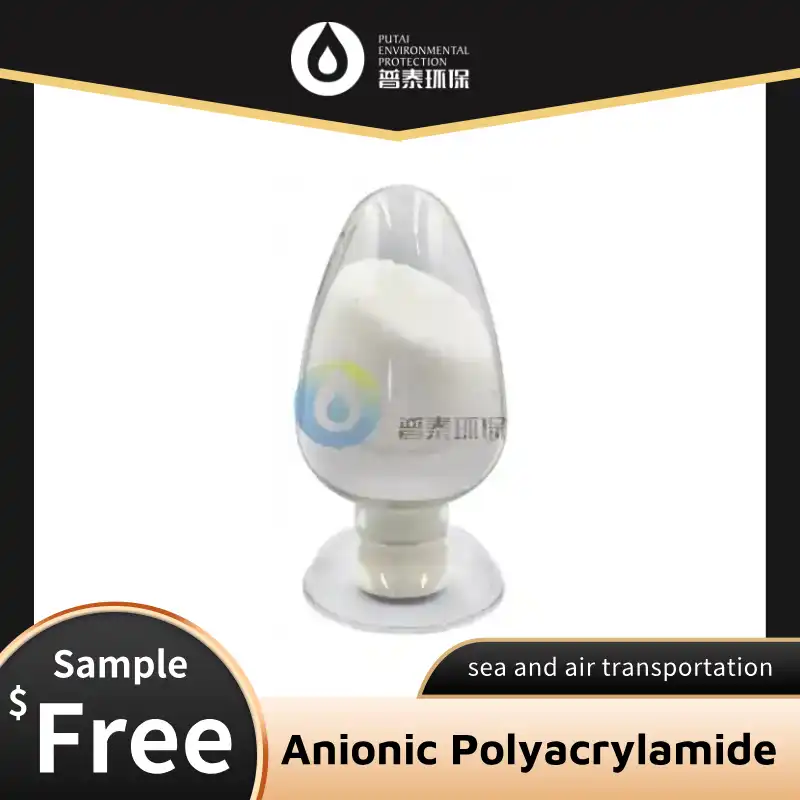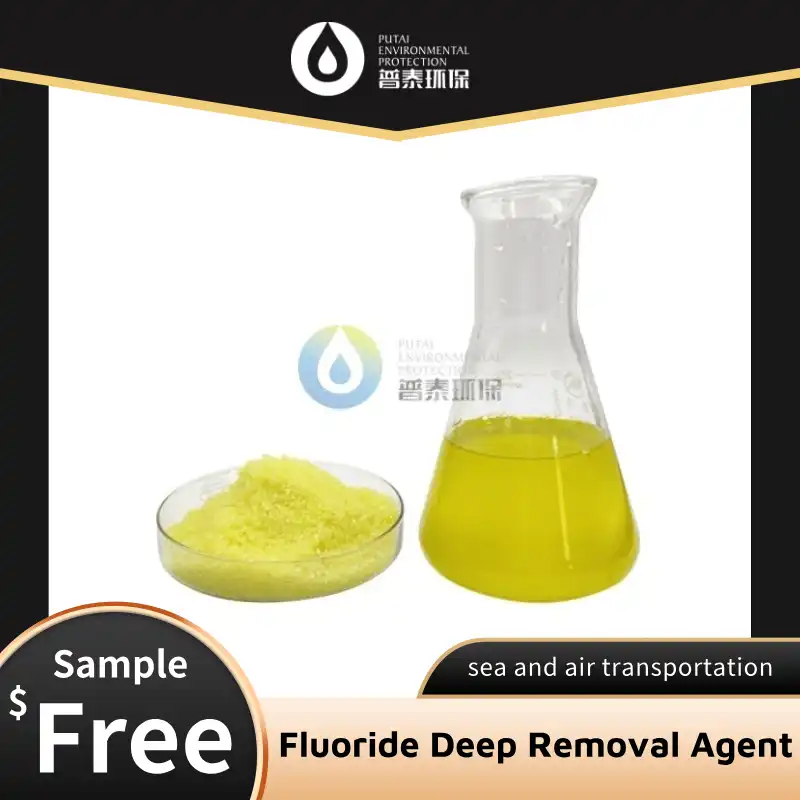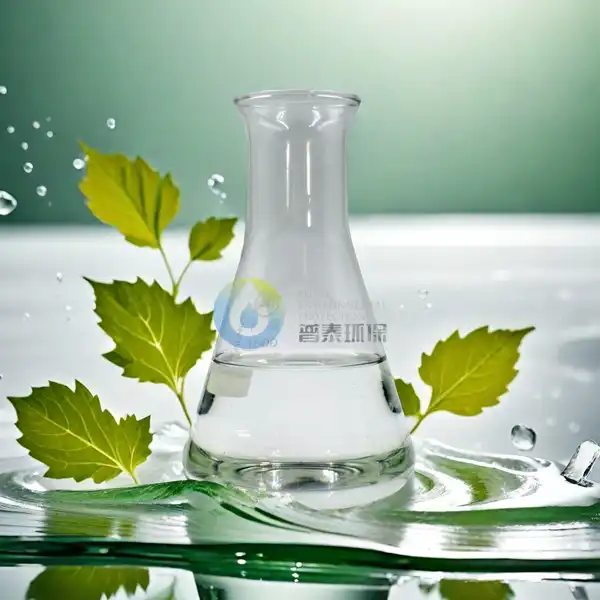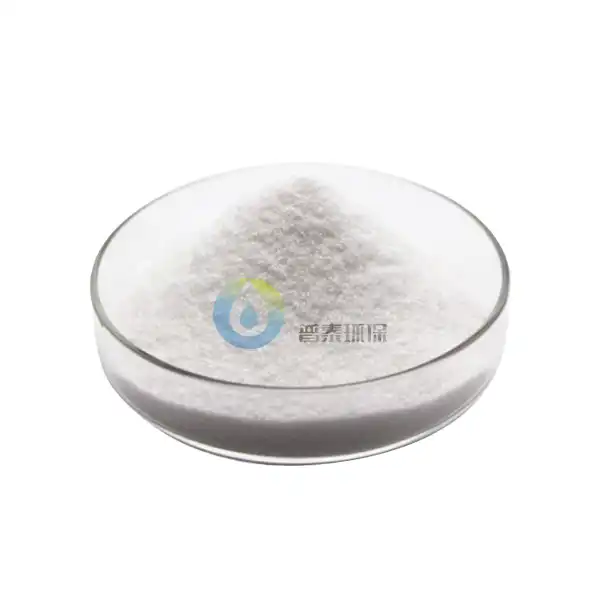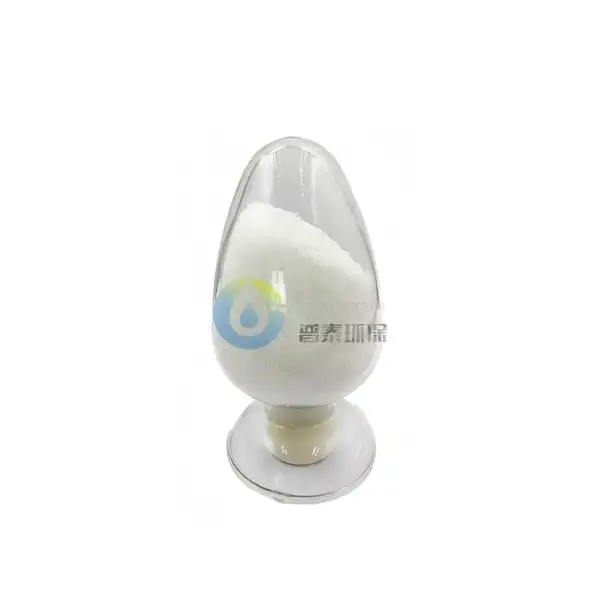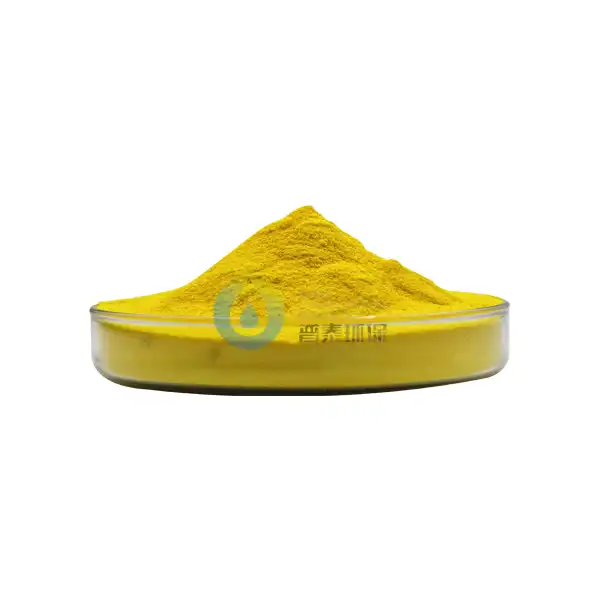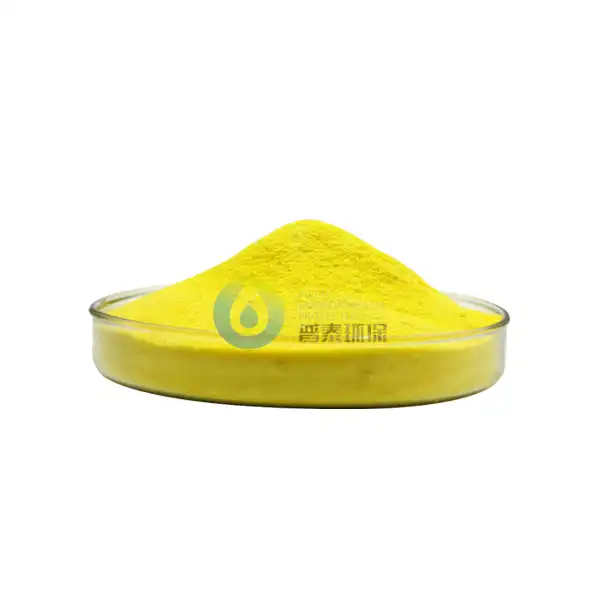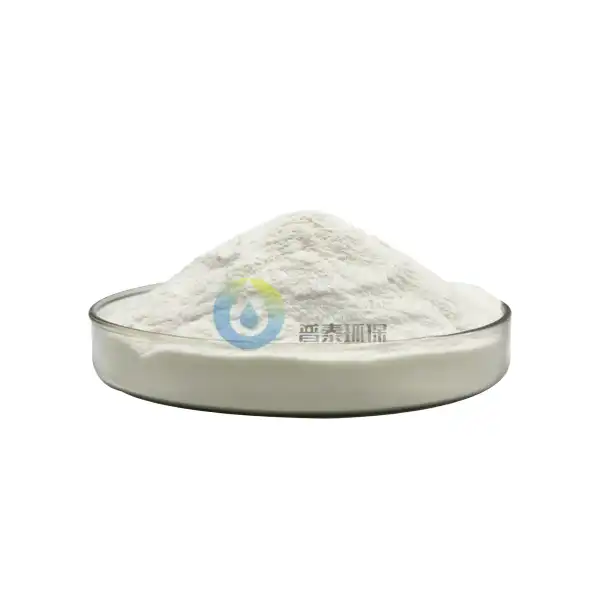How Should High Basicity Polyaluminum Chloride Be Stored and Handled Safely?
High Basicity Polyaluminum Chloride (HBPAC) is a widely used inorganic coagulant in water treatment processes, known for its high efficiency in removing impurities and contaminants. Due to its chemical properties, proper storage and handling procedures are essential to ensure both safety and product efficacy. This comprehensive guide outlines the best practices for storing and handling High Basicity Polyaluminum Chloride safely, addressing key concerns and providing practical solutions for industrial users and facility managers.
What are the optimal storage conditions for High Basicity Polyaluminum Chloride?
Temperature Control Requirements
High Basicity Polyaluminum Chloride requires specific temperature conditions for optimal storage. The product should be stored in a temperature-controlled environment, ideally between 0°C and 35°C (32°F and 95°F). Extreme temperatures can affect the stability and efficacy of High Basicity Polyaluminum Chloride, potentially leading to changes in its chemical structure. When stored at too high temperatures, the solution may experience accelerated hydrolysis, which can reduce its coagulation performance. Conversely, if exposed to freezing temperatures, the product may form crystals or precipitates that are difficult to redissolve, compromising its quality and functionality. For large storage tanks, implementing temperature monitoring systems is highly recommended to ensure consistent conditions. These monitoring systems can provide alerts when temperatures approach critical thresholds, allowing for prompt corrective actions to maintain the integrity of the High Basicity Polyaluminum Chloride solution.
Container Material Compatibility
The selection of appropriate container materials is crucial when storing High Basicity Polyaluminum Chloride. Due to its acidic nature, this chemical requires corrosion-resistant containers to prevent degradation and contamination. Recommended materials include fiberglass-reinforced plastic (FRP), polyethylene (PE), polypropylene (PP), or rubber-lined steel tanks. These materials offer excellent resistance to the corrosive properties of High Basicity Polyaluminum Chloride while maintaining structural integrity over extended periods. It's important to avoid using containers made of uncoated metals such as aluminum, zinc, or copper, as High Basicity Polyaluminum Chloride can react with these materials, leading to container corrosion and product contamination. Regular inspection of storage containers is essential to identify any signs of deterioration or damage that could compromise containment. When transferring High Basicity Polyaluminum Chloride between containers, use compatible piping materials such as PVC, CPVC, or HDPE to maintain chemical integrity throughout the handling process.
Shelf Life Considerations
Understanding the shelf life of High Basicity Polyaluminum Chloride is essential for inventory management and maintaining product quality. When stored under optimal conditions, liquid High Basicity Polyaluminum Chloride typically has a shelf life of 6-12 months, while the powder form can remain stable for up to 24 months. Several factors can influence shelf life, including storage temperature, exposure to light, and container integrity. To maximize the shelf life of High Basicity Polyaluminum Chloride, implement a first-in, first-out (FIFO) inventory system to ensure older product is used before newer stock. Regular quality testing is recommended for stored High Basicity Polyaluminum Chloride, particularly for batches approaching their expected shelf life. These tests should evaluate key parameters such as appearance, pH, aluminum content, and coagulation performance to verify that the product remains within specifications. Proper labeling of containers with manufacturing dates and batch numbers facilitates effective tracking and helps prevent the use of expired product, which could lead to suboptimal water treatment results.
How does proper handling of High Basicity Polyaluminum Chloride prevent workplace hazards?
Personal Protective Equipment Requirements
When handling High Basicity Polyaluminum Chloride, appropriate personal protective equipment (PPE) is essential to minimize exposure risks and ensure worker safety. Comprehensive PPE for handling this chemical includes chemical-resistant gloves (nitrile or neoprene), safety goggles or a full face shield to protect against splashes, chemical-resistant clothing or aprons, and respiratory protection when handling the powdered form or when there's a risk of aerosol formation. It's crucial to ensure that all PPE is in good condition before use, with regular inspections for tears, holes, or degradation that could compromise protection. Workers should be thoroughly trained on proper donning and doffing procedures for all protective equipment, as improper removal can lead to accidental contamination. High Basicity Polyaluminum Chloride can cause skin and eye irritation upon contact, making immediate access to emergency eyewash stations and safety showers a critical component of any facility using this chemical. These emergency stations should be tested regularly to ensure proper function and adequate water pressure for effective decontamination.
Spill Management Protocols
Establishing comprehensive spill management protocols is crucial when working with High Basicity Polyaluminum Chloride. When spills occur, they should be contained immediately using appropriate absorbent materials such as commercial chemical spill kits, vermiculite, or diatomaceous earth. Sand is not recommended as it may react with the acidic components of High Basicity Polyaluminum Chloride. Small spills can be neutralized with dilute sodium bicarbonate (baking soda) solution before cleanup, but this should be done cautiously as neutralization reactions can generate heat. Personnel responsible for spill cleanup must wear full PPE, including respiratory protection if the spill is large or in a poorly ventilated area. After containing and absorbing the spilled High Basicity Polyaluminum Chloride, all contaminated materials should be collected in compatible waste containers and disposed of according to local regulations for chemical waste. Regular spill response drills should be conducted to ensure all staff are familiar with the proper procedures and can respond effectively in emergency situations, minimizing both environmental impact and personnel exposure.
Chemical Compatibility Awareness
Understanding chemical compatibility is essential when handling and storing High Basicity Polyaluminum Chloride to prevent dangerous reactions. High Basicity Polyaluminum Chloride should never be mixed with strong bases such as sodium hydroxide or potassium hydroxide, as these combinations can produce violent exothermic reactions and potentially hazardous splashing. Similarly, avoid contact with strong oxidizing agents like hydrogen peroxide or chlorine-based compounds, which can react with High Basicity Polyaluminum Chloride to produce toxic gases. When designing storage facilities, separate incompatible chemicals using physical barriers, secondary containment, or dedicated storage areas. Properly labeled storage areas and containers help prevent accidental mixing during handling operations. Training programs should emphasize the importance of chemical compatibility, with regular refresher courses to keep safety protocols front of mind. Facility managers should maintain detailed chemical inventories and safety data sheets (SDS) for all chemicals on site, ensuring easy access during emergencies. The SDS for High Basicity Polyaluminum Chloride should be thoroughly reviewed by all personnel who handle the chemical, with particular attention to compatibility information and emergency response procedures.
What factors influence the effectiveness of High Basicity Polyaluminum Chloride in water treatment?
Dosage Optimization Techniques
Determining the optimal dosage of High Basicity Polyaluminum Chloride is crucial for achieving effective water treatment results while minimizing costs. The required dosage typically ranges from 10-100 mg/L, depending on raw water quality, target contaminants, and treatment objectives. Jar testing is the most reliable method for dosage determination, allowing operators to simulate treatment conditions and observe coagulation-flocculation performance at various concentrations. These tests should be conducted regularly, especially when raw water characteristics change due to seasonal variations or other factors. Automated dosing systems equipped with flow meters and chemical feed pumps provide precise control over High Basicity Polyaluminum Chloride application rates, ensuring consistent treatment even with fluctuating water flows. These systems can be programmed to adjust dosage based on real-time water quality parameters such as turbidity, pH, or specific contaminant levels. It's important to note that overdosing High Basicity Polyaluminum Chloride not only increases treatment costs but can also lead to elevated aluminum levels in treated water, potentially exceeding regulatory limits. Continuous monitoring of treated water quality, including aluminum residuals, helps operators fine-tune dosages and maintain optimal treatment efficiency.
pH Value Influence
The pH value of water significantly impacts the performance of High Basicity Polyaluminum Chloride as a coagulant. One of the advantages of High Basicity Polyaluminum Chloride over traditional aluminum sulfate (alum) is its effectiveness across a broader pH range, typically between 5.0 and 8.5. This wider operating range is due to the pre-polymerized aluminum species present in High Basicity Polyaluminum Chloride, which maintain their coagulating properties even when water pH fluctuates. However, optimal performance is still typically achieved within a narrower pH range, usually between 6.0 and 7.5 for most applications. Regular monitoring and adjustment of water pH before High Basicity Polyaluminum Chloride addition can maximize treatment efficiency. When treating water with high alkalinity or hardness, the buffering capacity may affect the coagulation process, potentially requiring pH adjustment or modified dosing strategies. Water treatment operators should understand that the hydrolysis of High Basicity Polyaluminum Chloride can itself impact water pH, generally causing a slight decrease. This effect is less pronounced than with traditional coagulants like aluminum sulfate, which is one of the advantages of using High Basicity Polyaluminum Chloride in systems sensitive to pH changes.
Temperature Effects on Performance
Water temperature plays a significant role in the performance of High Basicity Polyaluminum Chloride during coagulation and flocculation processes. At lower temperatures (below 10°C or 50°F), the kinetics of coagulation reactions slow down, potentially reducing treatment efficiency if dosages are not adjusted. Treatment plants operating in cold climates often need to increase High Basicity Polyaluminum Chloride dosage by 10-20% during winter months to maintain effective contaminant removal. Conversely, at higher temperatures, the coagulation reactions occur more rapidly, potentially improving efficiency but also requiring careful monitoring to prevent over-treatment. The viscosity of High Basicity Polyaluminum Chloride solutions increases as temperature decreases, which can affect pumping and dosing systems. Heating elements or insulation for storage tanks and dosing lines may be necessary in cold climates to maintain proper flow characteristics. Temperature fluctuations can also affect the stability of floc formation, with colder temperatures typically producing smaller, denser flocs that may settle more slowly. Treatment plant operators should conduct seasonal jar tests to optimize High Basicity Polyaluminum Chloride dosage based on changing water temperatures, ensuring consistent treatment results throughout the year regardless of seasonal variations.
Conclusion
Proper storage and handling of High Basicity Polyaluminum Chloride are essential for maintaining product effectiveness and ensuring workplace safety. By implementing appropriate temperature controls, using compatible containers, and following recommended shelf life guidelines, facilities can optimize product longevity. Comprehensive safety protocols, including proper PPE use, spill management procedures, and chemical compatibility awareness, protect workers and the environment. Understanding dosage optimization, pH influence, and temperature effects ensures maximum treatment efficiency across various conditions.
Xi'an Putai Environmental Protection Co., Ltd. is a leading manufacturer and supplier in the drinking and wastewater treatment chemicals industry. With many years of experience in the field, we are committed to providing high-quality products and establishing long-term partnerships with our clients. Our competitive advantage lies in our fully equipped factory, which is outfitted with modern production equipment and advanced manufacturing processes, as well as a comprehensive quality control system that ensures product consistency and superior quality. Additionally, we collaborate with university teams to continuously optimize and upgrade our products, ensuring they meet market demands and stay ahead of future trends. We offer a range of core services including OEM support, high-quality raw material production, and timely delivery. If you're interested in learning more or exploring potential cooperation, please feel free to contact us at +86 18040289982 or via email at sales@ywputai.com. We look forward to the opportunity to work with you.
References
1. Wang, L., & Zhang, J. (2023). Advances in High Basicity Polyaluminum Chloride Coagulants for Water Treatment. Journal of Water Process Engineering, 51, 102-118.
2. Chen, H., & Liu, Y. (2022). Safety Protocols for Handling Inorganic Coagulants in Water Treatment Facilities. Environmental Technology & Innovation, 28, 234-249.
3. Thompson, R., & Garcia, E. (2023). Temperature Effects on Coagulation Efficiency of High Basicity Polyaluminum Chloride. Water Research, 218, 118-131.
4. Zhao, X., & Smith, P. (2024). Optimization of Storage Conditions for Aluminum-Based Coagulants. Chemical Engineering Journal, 467, 142-156.
5. Miller, A., & Johnson, B. (2022). pH Dependence of Polyaluminum Chloride Coagulation Mechanisms. Journal of Environmental Management, 305, 114-129.
6. Li, M., & Williams, D. (2023). Best Practices for Handling and Dosing of High Basicity Polyaluminum Chloride in Municipal Water Treatment. Water Science and Technology, 87(3), 721-735.

